Зачем они ведут блог от первого лица?
Несерьёзно как-то.
Будто это машинка из мультика, а не серьёзный научный аппарат.
Несерьёзно как-то.
Будто это машинка из мультика, а не серьёзный научный аппарат.
Follow along with the video below to see how to install our site as a web app on your home screen.
Примечание: This feature may not be available in some browsers.

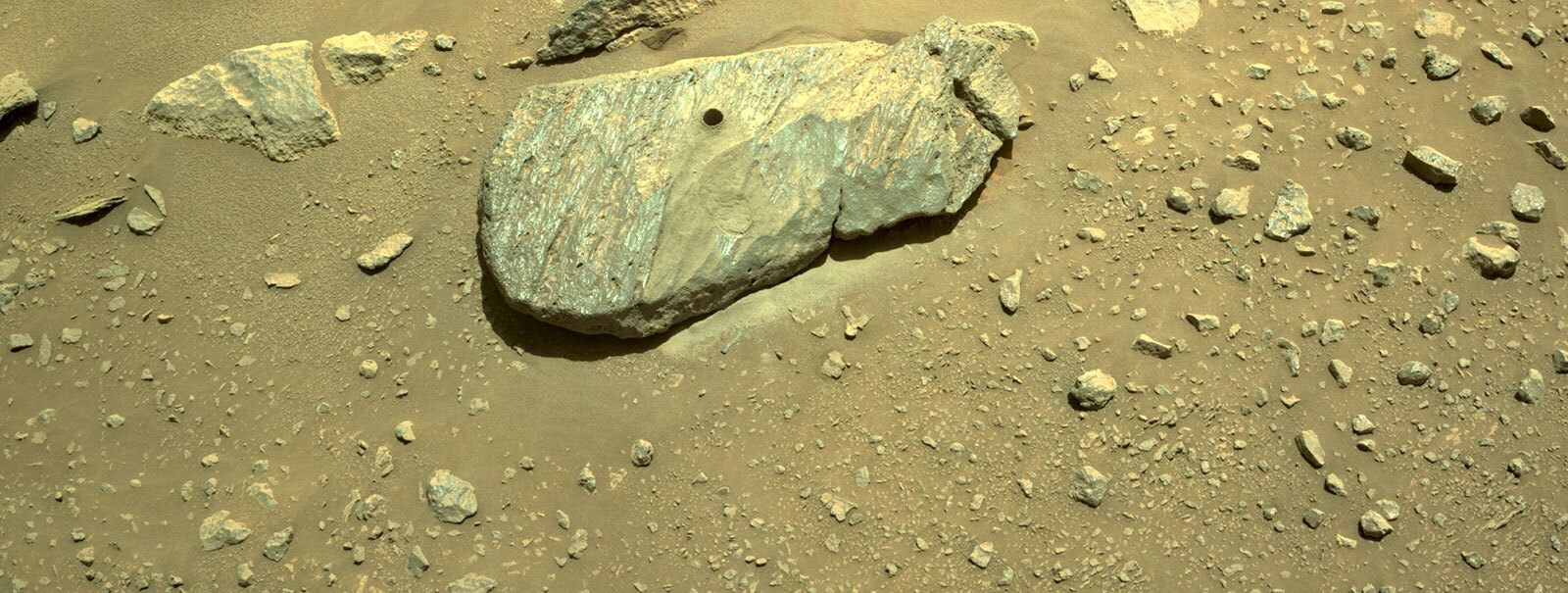

Perseverance's Navigation Camera Captures Sample Borehole: The drill hole from Perseverance's second sample-collection attempt can be seen, in this composite of two images taken on Sept. 1, by one of the rover’s navigation cameras. Credits: NASA/JPL-Caltech. Full image and caption ›
Perseverance will obtain additional imagery of the sample tube before potentially completing the process of collecting its first scientifically-selected Mars sample.
Data received late Sept. 1 from NASA’s Perseverance rover indicate the team has achieved its goal of successfully coring a Mars rock. The initial images downlinked after the historic event show an intact sample present in the tube after coring. However, additional images taken after the arm completed sample acquisition were inconclusive due to poor sunlight conditions. Another round of images with better lighting will be taken before the sample processing continues.
Obtaining additional imagery prior to proceeding with the sealing and storing of Mars rock sample is an extra step the team opted to include based on its experience with the rover’s sampling attempt on Aug. 5. Although the Perseverance mission team is confident that the sample is in the tube, images in optimal lighting conditions will confirm its presence.
Perseverance’s Sampling and Caching System uses a rotary-percussive drill and a hollow coring bit at the end of its 7-foot-long (2-meter-long) robotic arm to extract samples slightly thicker than a pencil. Within the bit during coring is a sample tube. After completing yesterday’s coring, Perseverance maneuvered the corer, bit, and open end of the sample tube in order to be imaged by the rover’s Mastcam-Z instrument. The target for the sample collection attempt was a briefcase-size rock belonging to a ridgeline that is more than half-a-mile (900 meters) long and contains rock outcrops and boulders.
Sample Tube in Perseverance's Drill With Rock Core: This Sept. 1 image from NASA’s Perseverance rover shows a sample tube with its cored-rock contents inside. Credits: NASA/JPL-Caltech/MSSS. Full image and caption ›
The initial set of images from Mastcam-Z showed the end of a cored rock within the sample tube. After taking these images, the rover began a procedure called “percuss to ingest,” which vibrates the drill bit and tube for one second, five separate times. The movement is designed to clear the lip of the sample tube of any residual material. The action can also cause a sample to slide down farther into the tube. After the rover finished the percuss-to-ingest procedure, it took a second set of Mastcam-Z images. In these images, the lighting is poor, and internal portions of the sample tube are not visible.
“The project got its first cored rock under its belt, and that’s a phenomenal accomplishment,” said Jennifer Trosper, project manager at NASA’s Jet Propulsion Laboratory in Southern California. “The team determined a location, and selected and cored a viable and scientifically valuable rock. We did what we came to do. We will work through this small hiccup with the lighting conditions in the images and remain encouraged that there is sample in this tube.”
Perseverance’s Drill After Cleaning Operation: Taken Sept. 1 by Mastcam-Z after Perseverance’s sample-coring activities, this image shows the rover’s drill with no cored rock sample evident in the sample tube. Credits: NASA/JPL-Caltech/ASU/MSSS. Full image and caption ›
Commands uplinked to the rover earlier today will result in images of the corer and tube to be acquired tomorrow, Sept. 3, at times of day on Mars when the Sun is angled in a more favorable position. Photos will also be taken after sunset to diminish point-sources of light that can saturate an image. The photos will be returned to Earth early in the morning of Sept. 4.
If the results of this additional imaging remain inconclusive, the Perseverance team still has several options to choose from going forward, including using the Sampling and Caching System’s volume probe (located inside the rover’s chassis) as a final confirmation of the sample being in the tube.
The Sept. 1 coring is the second time that Perseverance has employed its Sampling and Caching System since landing in Jezero Crater on Feb. 18, 2021.
More About Perseverance
A key objective for Perseverance’s mission on Mars is astrobiology, including the search for signs of ancient microbial life. The rover will characterize the planet’s geology and past climate, pave the way for human exploration of the Red Planet, and be the first mission to collect and cache Martian rock and regolith.
Subsequent NASA missions, in cooperation with ESA, would send spacecraft to Mars to collect these sealed samples from the surface and return them to Earth for in-depth analysis.
The Mars 2020 Perseverance mission is part of NASA’s Moon to Mars exploration approach, which includes Artemis missions to the Moon that will help prepare for human exploration of the Red Planet.
JPL, which is managed for NASA by Caltech in Pasadena, California, built and manages operations of the Perseverance rover.
For more about Perseverance:
Команда миссии Perseverance сообщила о том, что вторая попытка отбора пробы грунта с поверхности Марса получилась успешной. Образец был взят из камня Rochette на холме Citadelle в кратере Йезеро. Это была вторая попытка Perseverance взять пробу грунта. Первая состоялась 5 августа, однако порода оказалась слишком рыхлой, и в пробирку ничего не попало.
Была выбрана другая цель для отбора, для этого ровер проехал еще 455 метров. Камень предварительно был исследован, отшлифован, чтобы специалисты могли убедиться, что он интересен с научной точки зрения. Затем был запущен алгоритм бурения и отбора пробы. Снимки пробирки, сделанные после второй попытки, показали наличие в ней грунта.
Все образцы, собранные в пробирки и запечатанные в систему хранения, будут в дальнейшем доставлены на Землю для дополнительных исследований. Миссия по отправке образцов разрабатывается совместно NASA и ESA.
У рогозина за Фёдора спроси.Зачем они ведут блог от первого лица?
Несерьёзно как-то.
Будто это машинка из мультика, а не серьёзный научный аппарат.
Марсоход Perseverance сделал селфи рядом с просверленным им камнем
Ровер Perseverance, работающий в кратере Йезеро на Марсе, сделал селфи из района Citadelle, где работал в последние дни. Он успешно взял две пробы марсианской породы из камня, запечатав их в титановые трубки для дальнейшей отправки на Землю следующей миссией.
Команда ровера уже наметила следующую цель для исследований, однако третья проба, скорее всего, будет взята уже после вынужденной паузы. В начале октября все марсианские миссии NASA будут приостановлены из-за того, что между Красной планетой и Землей окажется Солнце, а это ухудшит связь с аппаратами на Марсе.
В целях диагностики состояния ровер периодически себя всего «осматривает».
Как это делается (селфи)
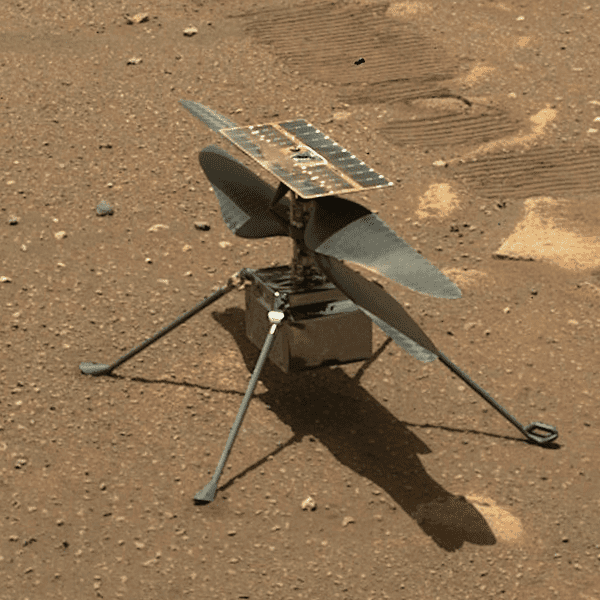
 www.zmescience.com
www.zmescience.com
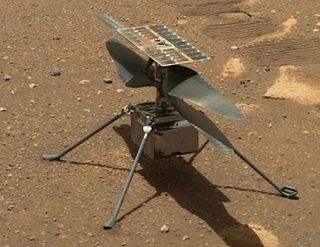
NASA's Mars helicopter Ingenuity didn't get off the ground as planned earlier this month.
Ingenuity was scheduled to make its 14th Red Planet sortie on Sept. 18, a relatively short and simple hop that would have demonstrated the little chopper's ability to fly with slightly higher rotor speeds — 2,700 revolutions per minute (RPM) rather than the usual 2,537 RPM.
The mission team is making this adjustment to deal with the Martian atmosphere, which is thinning out slightly as the seasons change on the floor of the Red Planet's Jezero Crater, Jaakko Karras, Ingenuity deputy operations lead at NASA's Jet Propulsion Laboratory in Southern California, wrote in an update Tuesday (Sept. 2.
В течение ближайших нескольких недель NASA не будет отдавать новые команды своим аппаратам, работающим на Марсе. Это вызвано тем, что Марс и Земля будут находиться по разные стороны от Солнца. Излучение звезды создает помехи, которые могут повредить поступающие с Земли команды и привести к сбоям в работе аппаратов.
В качестве меры предосторожности передача команд марсианским аппаратам будет приостановлена со 2 по 16 октября. Предварительно все они получили набор простых задач, которые продолжат выполнять даже во время плохой связи с Землей. Например, роверы Perseverance и Curiosity продолжат вести наблюдения за погодой, за пылевыми вихрями, проводить простейшие измерения. Вертолет Ingenuity останется в 175 метрах от Perseverance и будет периодически отправлять роверу отчеты о своем состоянии. Платформа InSight продолжит фиксировать марсотрясения с помощью своего сейсмографа.
Орбитальные аппараты Mars Odyssey, MAVEN и MRO продолжат сбор научных данных своими приборами и будут передавать на Землю ограниченный набор данных от аппаратов с поверхности Марса. Основной массив данных будет сохраняться на аппаратах для передачи на Землю, когда полноценная связь восстановится.

В том кратере условия - куда до них МарсуВ воскресенье, 10 октября, в кратере Рамон на юге Израиля начнется трехнедельный эксперимент, имитирующий условия полета на Марс.

https://gif.haarets.co.il/image/fet...l/polopoly_fs/1.10278296!/image/553643016.gifВ воскресенье, 10 октября, в кратере Рамон на юге Израиля начнется трехнедельный эксперимент, имитирующий условия полета на Марс.
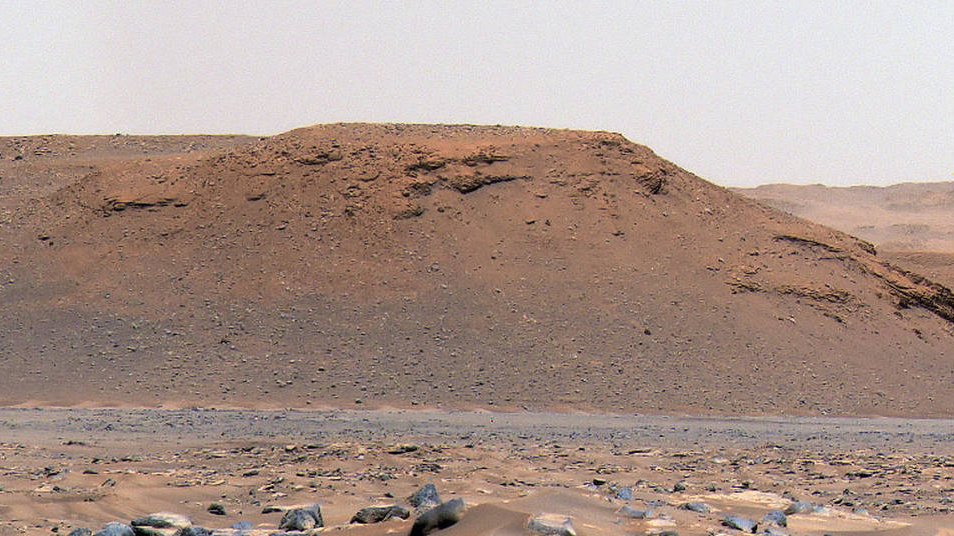
NASA, вероятно, нашло доказательства того, что раньше на Марсе могла быть вода. Марсоход Perseverance отправился в кратер Джезеро и сделал там снимки, которые могут подтверждать это смелое предположение. Аппарат фотографировал уступы кратера и невысокий холм под названием Kodiak, таким образом он получил изображения слоев отложений в пластах горных пород, сообщает New Atlas.

Фото:NASA/JPL-Caltech/ASU/MSSS
Ранее снимки со спутника показали, что кратер шириной 49 км (30 миль) когда-то был озером, куда впадала река. Ученые пришли к выводу, что северо-западный край кратера, возможно, представляет собой дельту реки.

Озеро на Марсе. Фото:NASA/JPL-Caltech/LANL/CNES/CNRS/ASU/MSSS
«Мелкозернистый материал на дне дельты, вероятно, содержит органику, — сообщил соавтор исследования Санджив Гупта. — Валуны наверху позволят нам получить образцы древних пород земной коры. Робот возьмет в этих местах пробы, после их доставят с Марса на Землю».

В кратере Джезеро. Фото: NASA/JPL-Caltech/ASU/MSSS
Ранее сообщалось, что на Красной планете обнаружили озера, которые находятся в необычных местах. В 2018 году ученые, работающие с данными орбитального аппарата Mars Express ESA, объявили об удивительном открытии: сигналы радара, отраженные от южного полюса Марса, показали наличие жидкого подземного озера. С тех пор было объявлено о нескольких подобных находках.
В воскресенье, 10 октября, в кратере Рамон на юге Израиля начнется трехнедельный эксперимент, имитирующий условия полета на Марс.
Американское управление по аэронавтике и исследованию космического пространства NASA опубликовала первые фотографии, присланные ровером Perseverance (Настойчивость) после вынужденного перерыва.
Напомним, NASA объявило о прекращении связи с исследующими Марс космическими аппаратами в конце сентября. Причиной этого вынужденного шага является так называемое «соединение» — Земля и Марс находятся по разные стороны от Солнца, такое событие происходит каждые два года.
Теперь Perseverance вернулся к работе и смог передать учёным на Землю новые впечатляющие фото из кратера Езеро. На официальной страничке Perseverance в социальной сети Twitter сообщается:
Я вернулся к работе, припарковался между этими двумя прекрасными обнажениями. Я сделал несколько снимков, изучал погоду, ставил химические эксперименты, а также получил обновление программного обеспечения».
С момента возвращения к работе Perseverance сделал ещё довольно много фотографий, ознакомиться с ними можно на сайте NASA.
Марсоход Perseverance приземлился в кратере Езеро 18 февраля 2021 года.
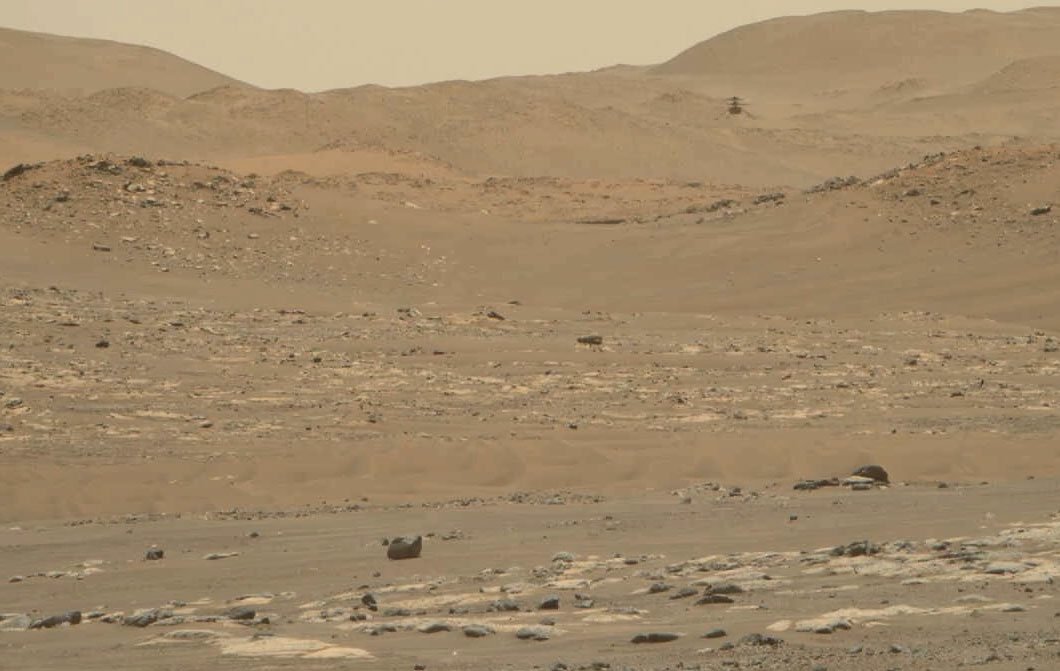
Recently downlinked imagery of a September flight has allowed the rover imaging team to put together a video of rotorcraft performing to near-perfection.
Video footage from NASA’s Perseverance Mars rover of the Ingenuity Mars Helicopter’s 13th flight on Sept. 4 provides the most detailed look yet of the rotorcraft in action.
Ingenuity is currently prepping for its 16th flight, scheduled to take place no earlier than Saturday, Nov. 20, but the 160.5-second Flight 13 stands out as one of Ingenuity’s most complicated. It involved flying into varied terrain within the “Séítah” geological feature and taking images of an outcrop from multiple angles for the rover team. Acquired from an altitude of 26 feet (8 meters), the images complement those collected during Flight 12, providing valuable insight for Perseverance scientists and rover drivers.
Captured by the rover’s two-camera Mastcam-Z, one video clip of Flight 13 shows a majority of the 4-pound (1.8-kilogram) rotorcraft’s flight profile. The other provides a closeup of takeoff and landing, which was acquired as part of a science observation intended to measure the dust plumes generated by the helicopter.
“The value of Mastcam-Z really shines through with these video clips,” said Justin Maki, deputy principal investigator for the Mastcam-Z instrument at NASA’s Jet Propulsion Laboratory in Southern California. “Even at 300 meters [328 yards] away, we get a magnificent closeup of takeoff and landing through Mastcam-Z’s ‘right eye.’ And while the helicopter is little more than a speck in the wide view taken through the ‘left eye,’ it gives viewers a good feel for the size of the environment that Ingenuity is exploring.”
During takeoff, Ingenuity kicks up a small plume of dust that the right camera, or “eye,” captures moving to the right of the helicopter during ascent. After its initial climb to planned maximum altitude of 26 feet (8 meters), the helicopter performs a small pirouette to line up its color camera for scouting. Then Ingenuity pitches over, allowing the rotors’ thrust to begin moving it horizontally through the thin Martian air before moving offscreen. Later, the rotorcraft returns and lands in the vicinity of where it took off. The team targeted a different landing spot – about 39 feet (12 meters) from takeoff – to avoid a ripple of sand it landed on at the completion of Flight 12.
Though the view from Mastcam-Z’s left eye shows less of the helicopter and more of Mars than the right, the wide angle provides a glimpse of the unique way that the Ingenuity team programmed the flight to ensure success.
“We took off from the crater floor and flew over an elevated ridgeline before dipping into Séítah,” said Ingenuity Chief Pilot Håvard Grip of JPL. “Since the helicopter’s navigation filter prefers flat terrain, we programmed in a waypoint near the ridgeline, where the helicopter slows down and hovers for a moment. Our flight simulations indicated that this little ‘breather’ would help the helicopter keep track of its heading in spite of the significant terrain variations. It does the same on the way back. It’s awesome to actually get to see this occur, and it reinforces the accuracy of our modeling and our understanding of how to best operate Ingenuity.”
The wide-angle view also shows how Ingenuity maintains altitude during the flight. After an initial ascent to 26 feet (8 meters) altitude, the helicopter’s laser altimeter notes a change in elevation of the terrain below as it heads northeast toward the ridgeline. Ingenuity automatically adjusts, climbing slightly as it approaches the ridge and then descending to remain 26 feet (8 meters) above the undulating surface. Once it flies to the right, out of view, Ingenuity collects 10 images of the rocky outcrop with its color camera before heading back into frame and returning to land in the targeted location.
After Flight 13, Ingenuity went quiet in October, along with NASA’s other Mars spacecraft during Mars solar conjunction, when the Red Planet and Earth are on opposite sides of the Sun, precluding most communications. Following conjunction, Ingenuity performed a short experimental flight test before undertaking Flight 15, which began the multi-flight journey back to the vicinity of “Wright Brothers Field,” its starting point back in April.
More About Ingenuity
The Ingenuity Mars Helicopter was built by JPL, which also manages the operations demonstration activity during its extended mission for NASA Headquarters. It is supported by NASA’s Science, Aeronautics Research, and Space Technology mission directorates. NASA’s Ames Research Center in California’s Silicon Valley, and NASA’s Langley Research Center in Hampton, Virginia, provided significant flight performance analysis and technical assistance during Ingenuity’s development. AeroVironment Inc., Qualcomm, and SolAero also provided design assistance and major vehicle components. Lockheed Martin Space designed and manufactured the Mars Helicopter Delivery System.
More About Perseverance
A key objective for Perseverance’s mission on Mars is astrobiology, including the search for signs of ancient microbial life. The rover will characterize the planet’s geology and past climate, pave the way for human exploration of the Red Planet, and be the first mission to collect and cache Martian rock and regolith.
Subsequent NASA missions, in cooperation with ESA (European Space Agency), would send spacecraft to Mars to collect these sealed samples from the surface and return them to Earth for in-depth analysis.
The Mars 2020 Perseverance mission is part of NASA’s Moon to Mars exploration approach, which includes Artemis missions to the Moon that will help prepare for human exploration of the Red Planet.
JPL, which is managed for NASA by Caltech in Pasadena, California, built and manages operations of the Perseverance rover.
Да не, можно и без него, но мороки больше, реактор обслужить проще чем десяток гектар батарей...Считаю, что без ядерного реактора на Марсе делать нечего
Так это уж не первый год известно...Это что ж там, реально осадочные породы что-ли?
